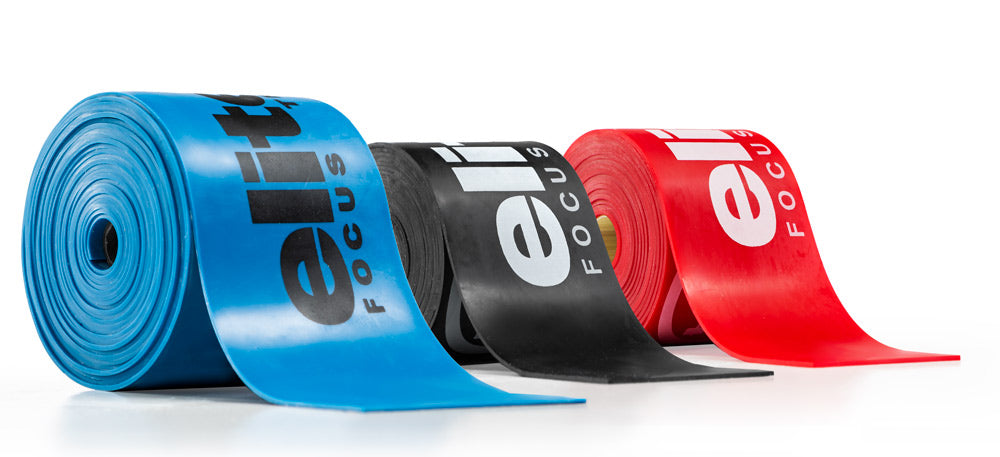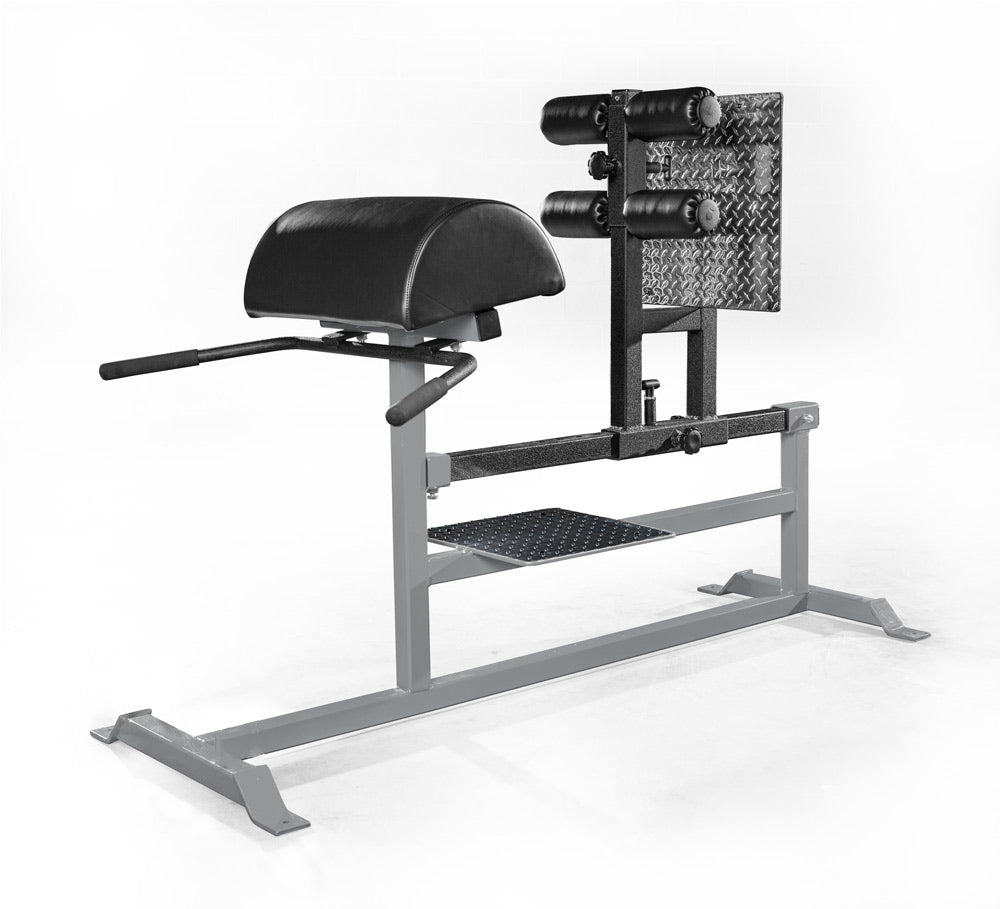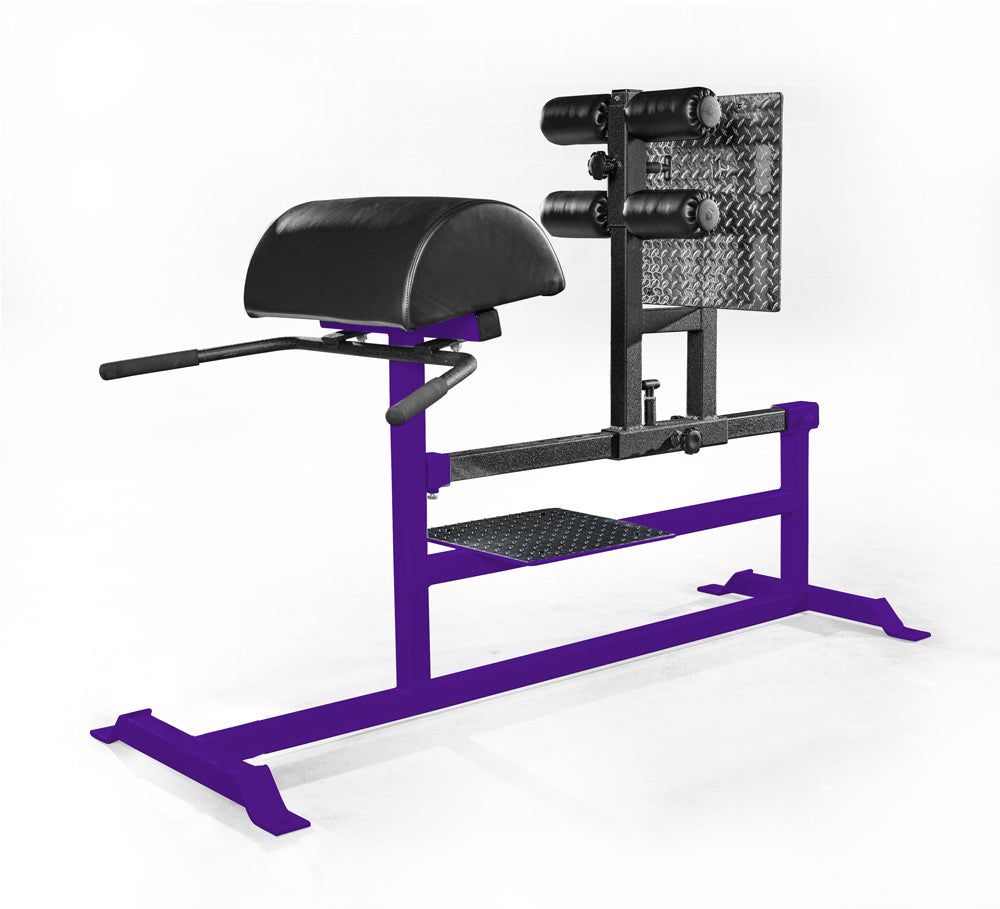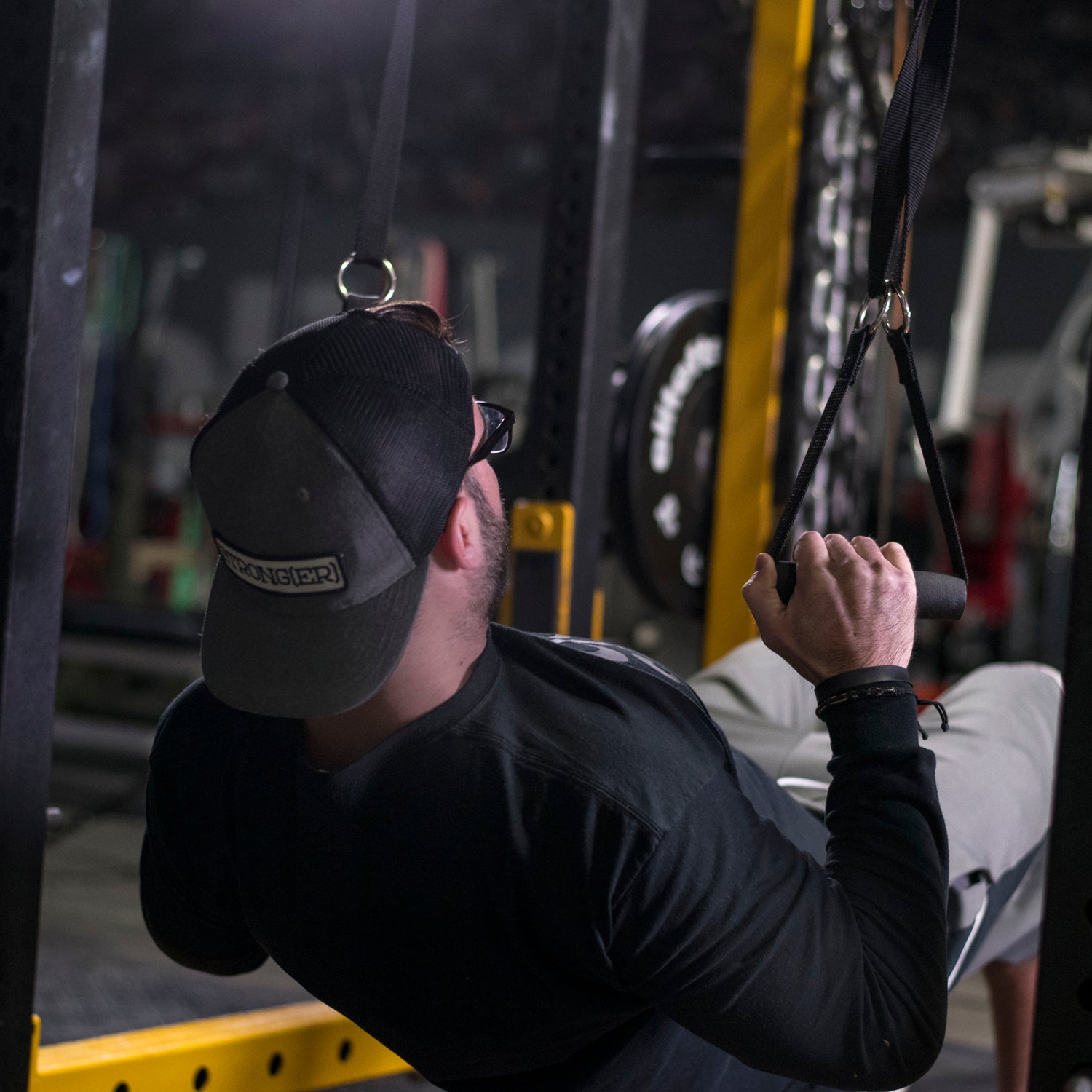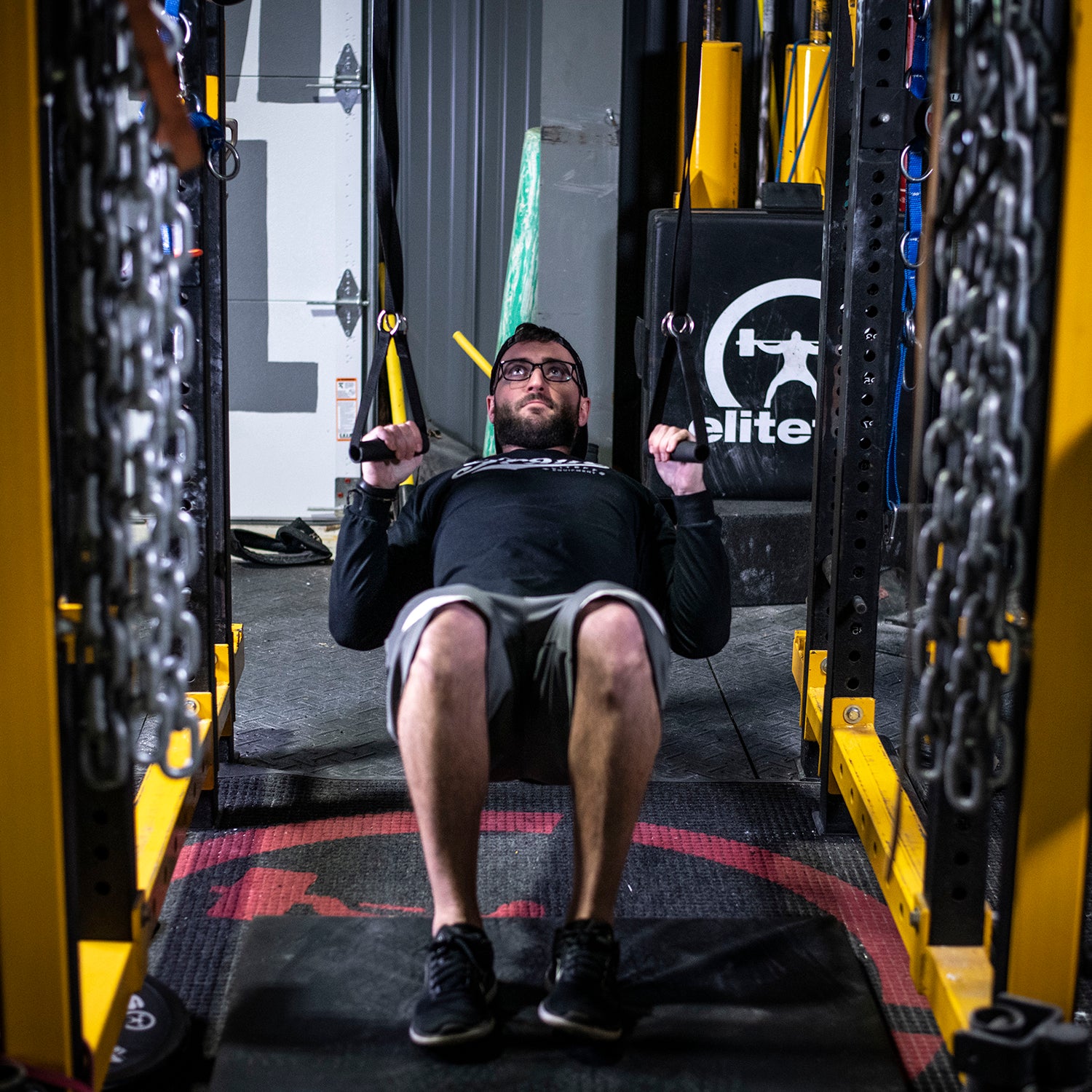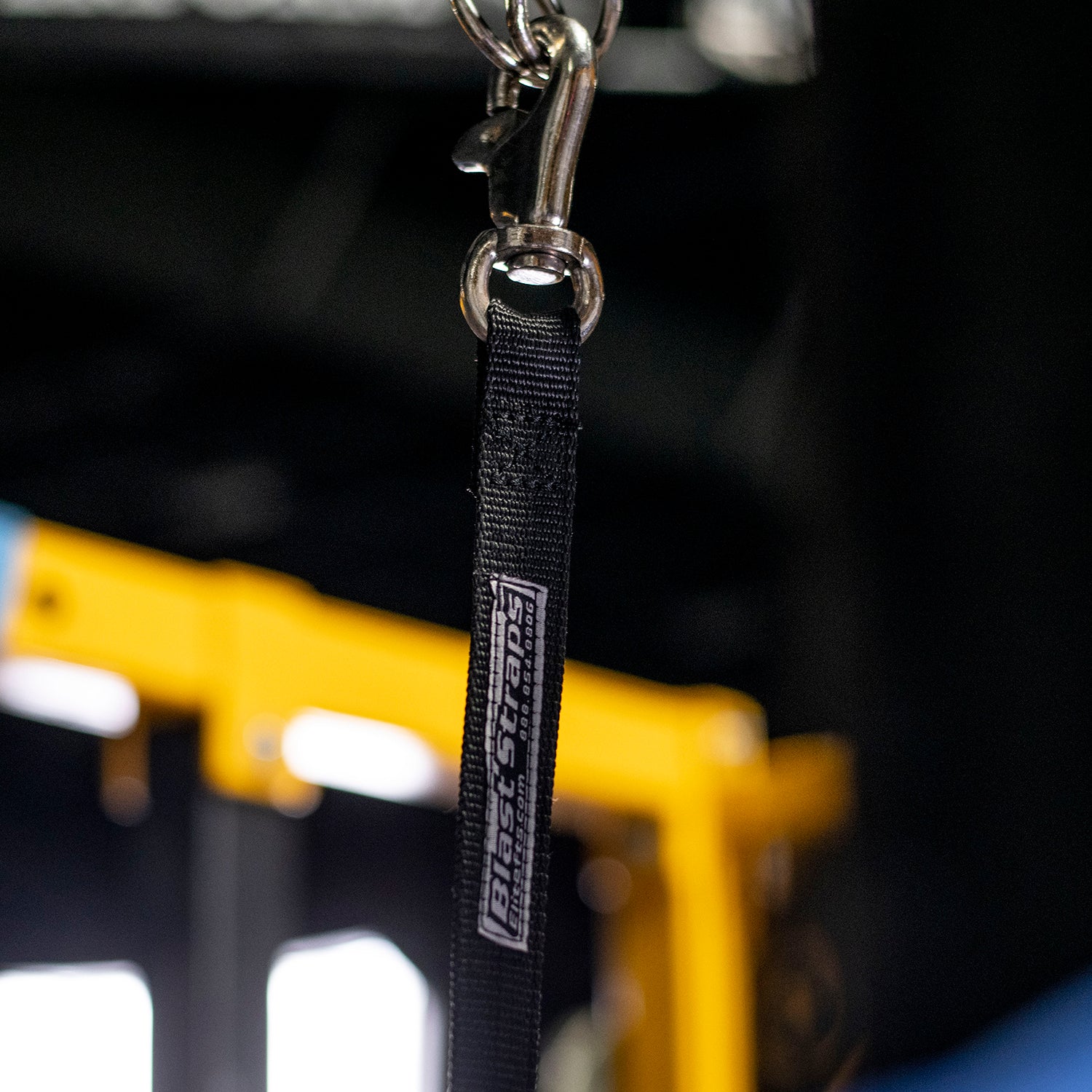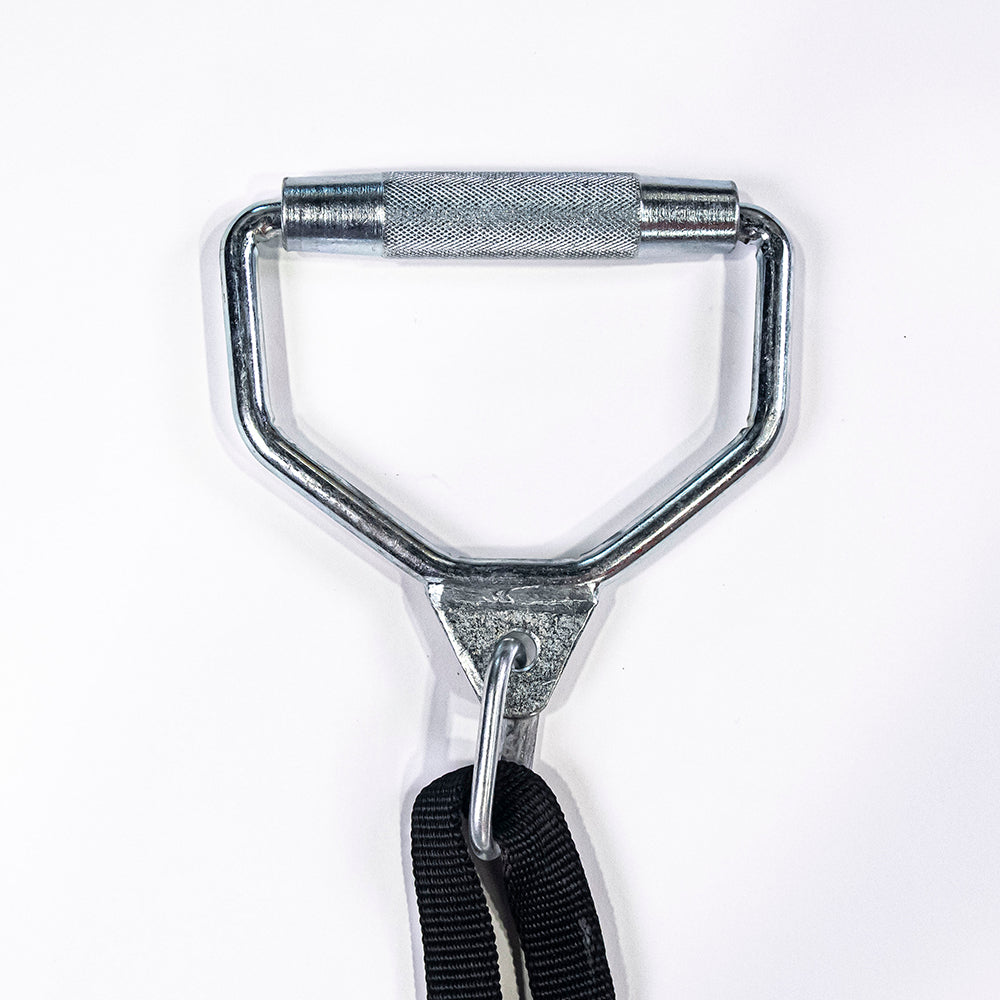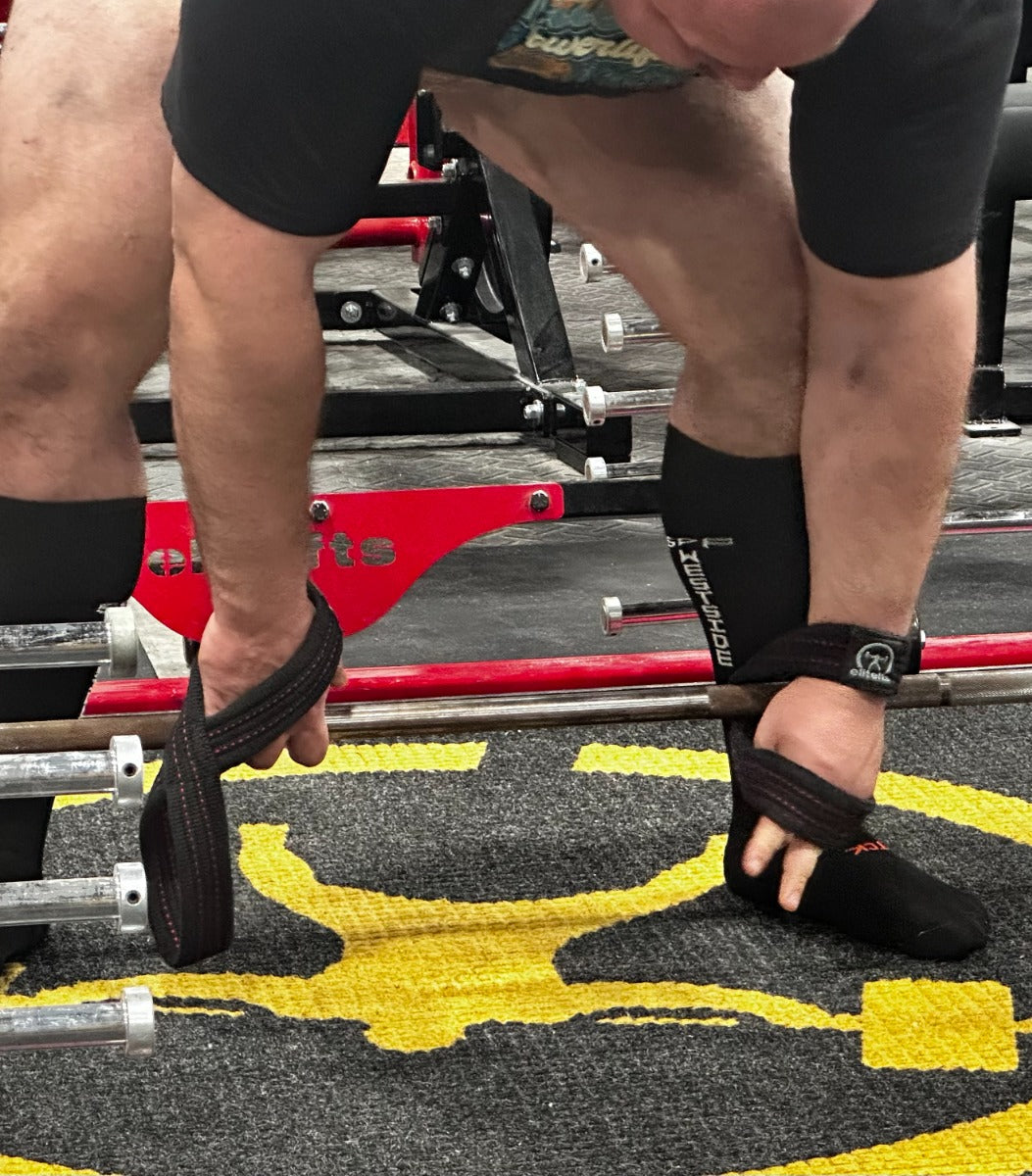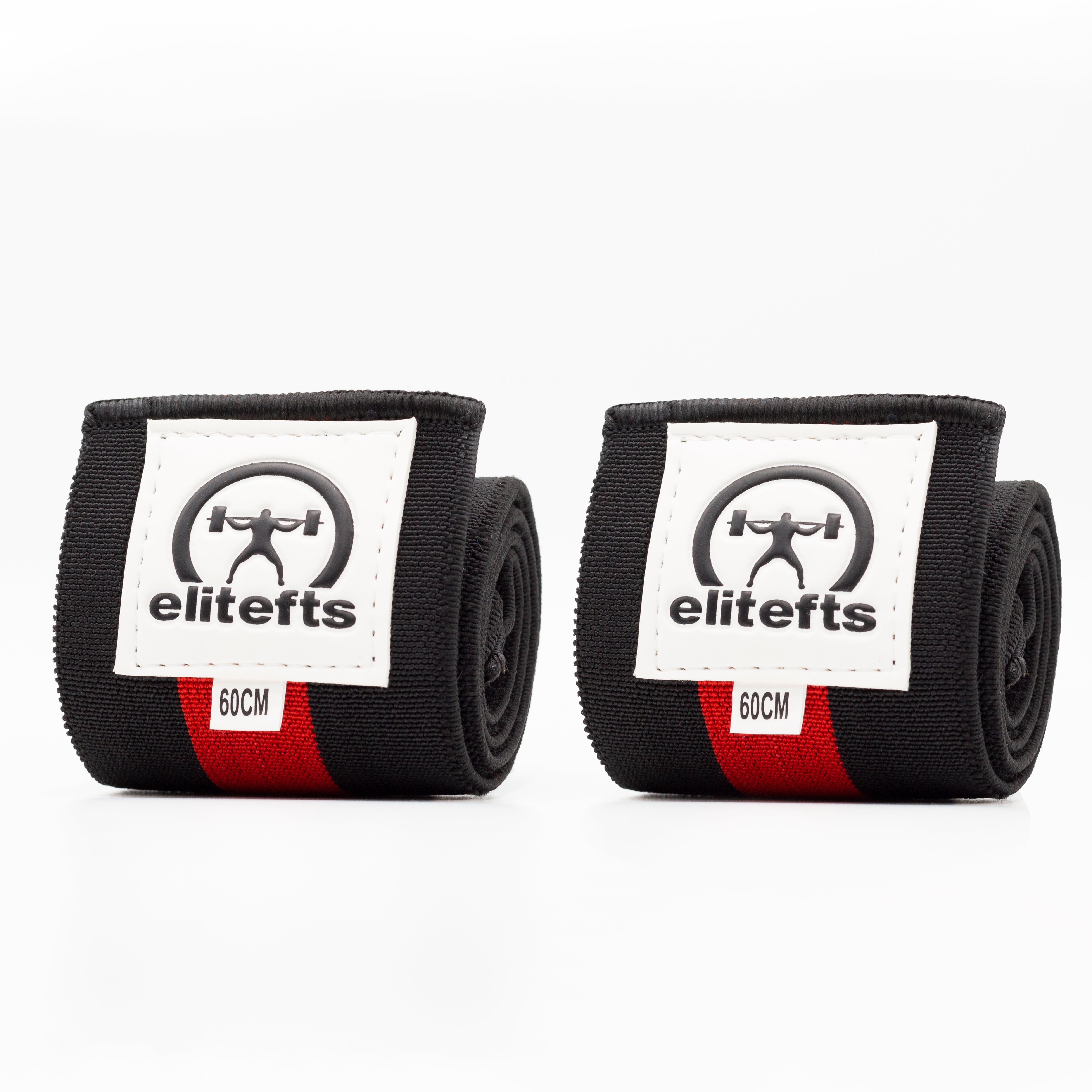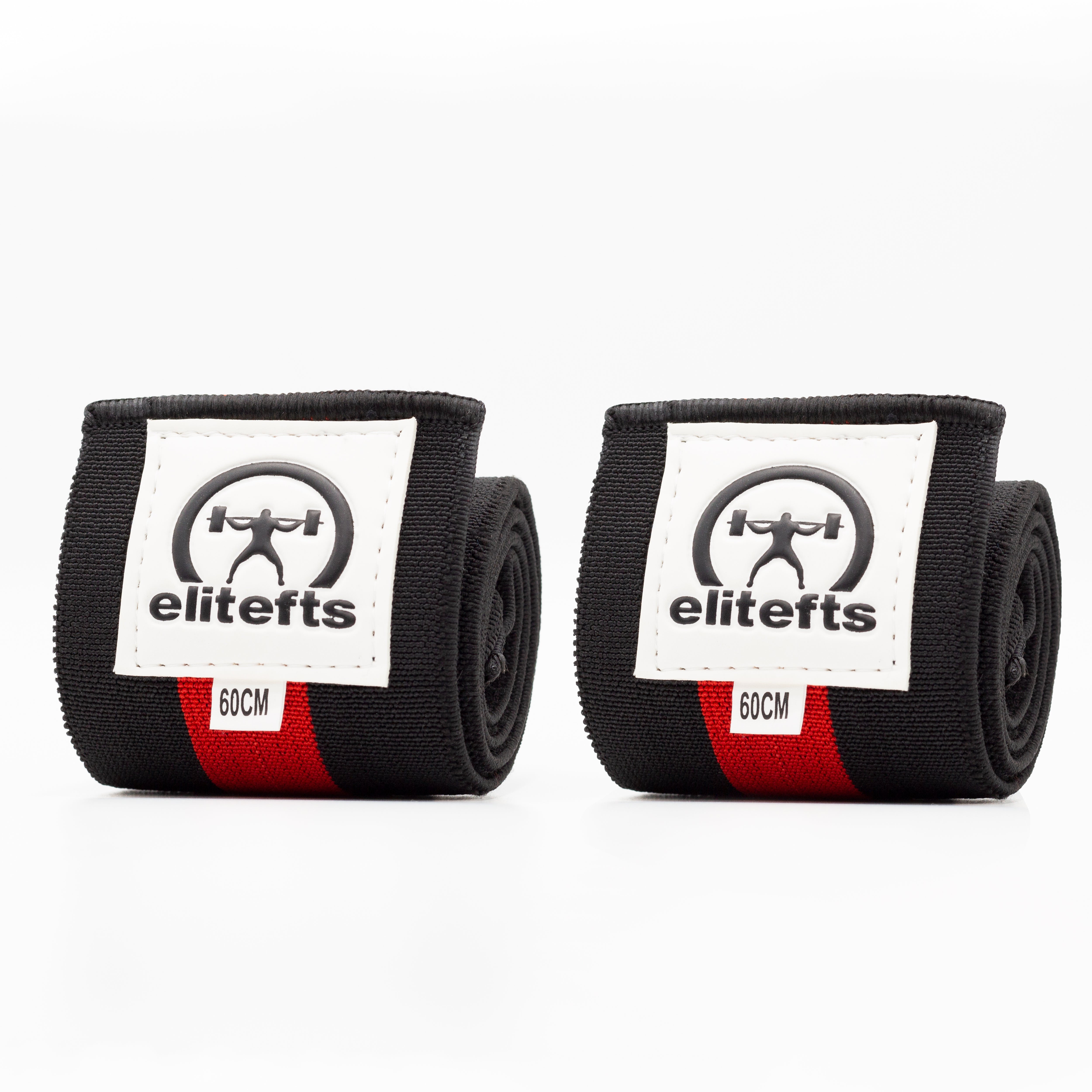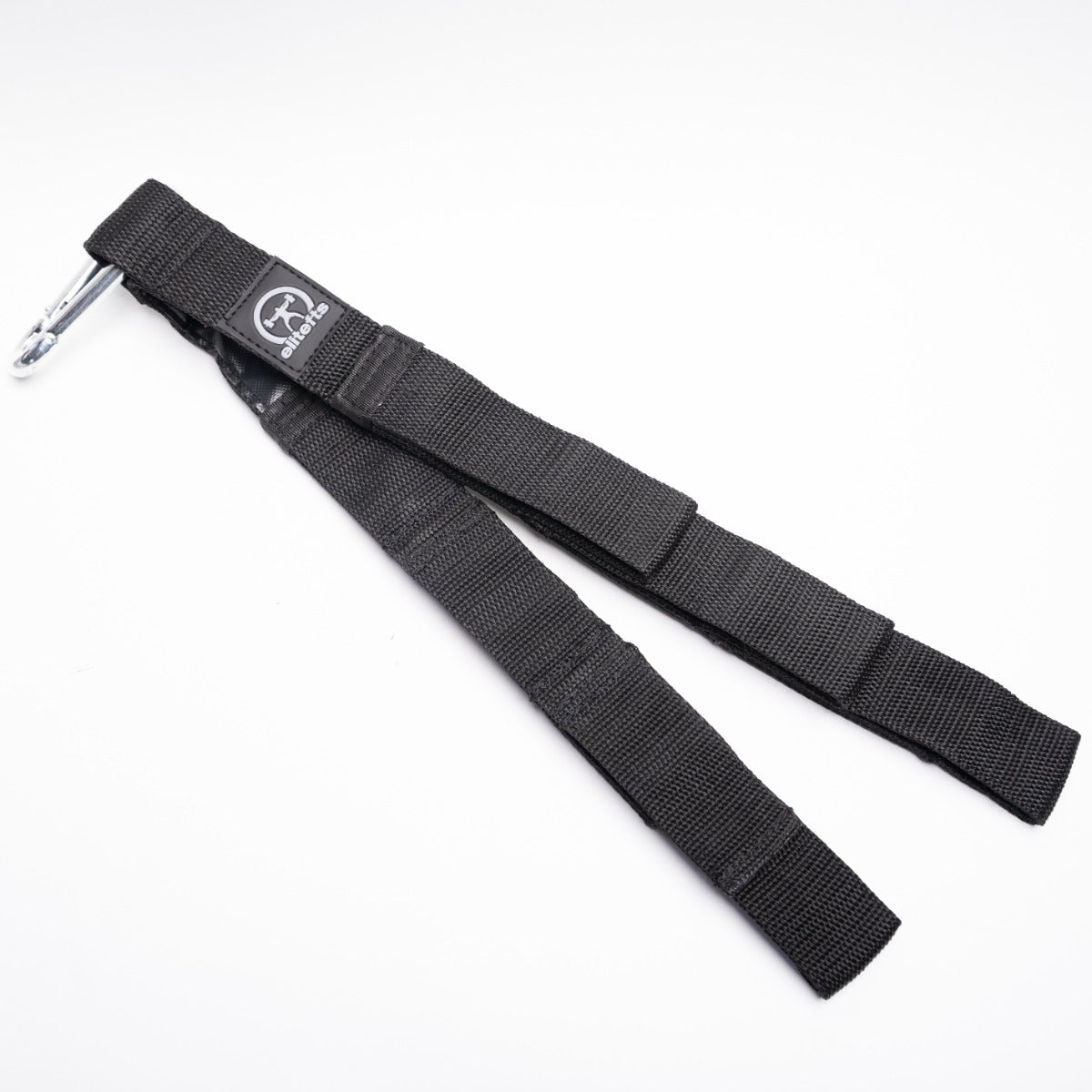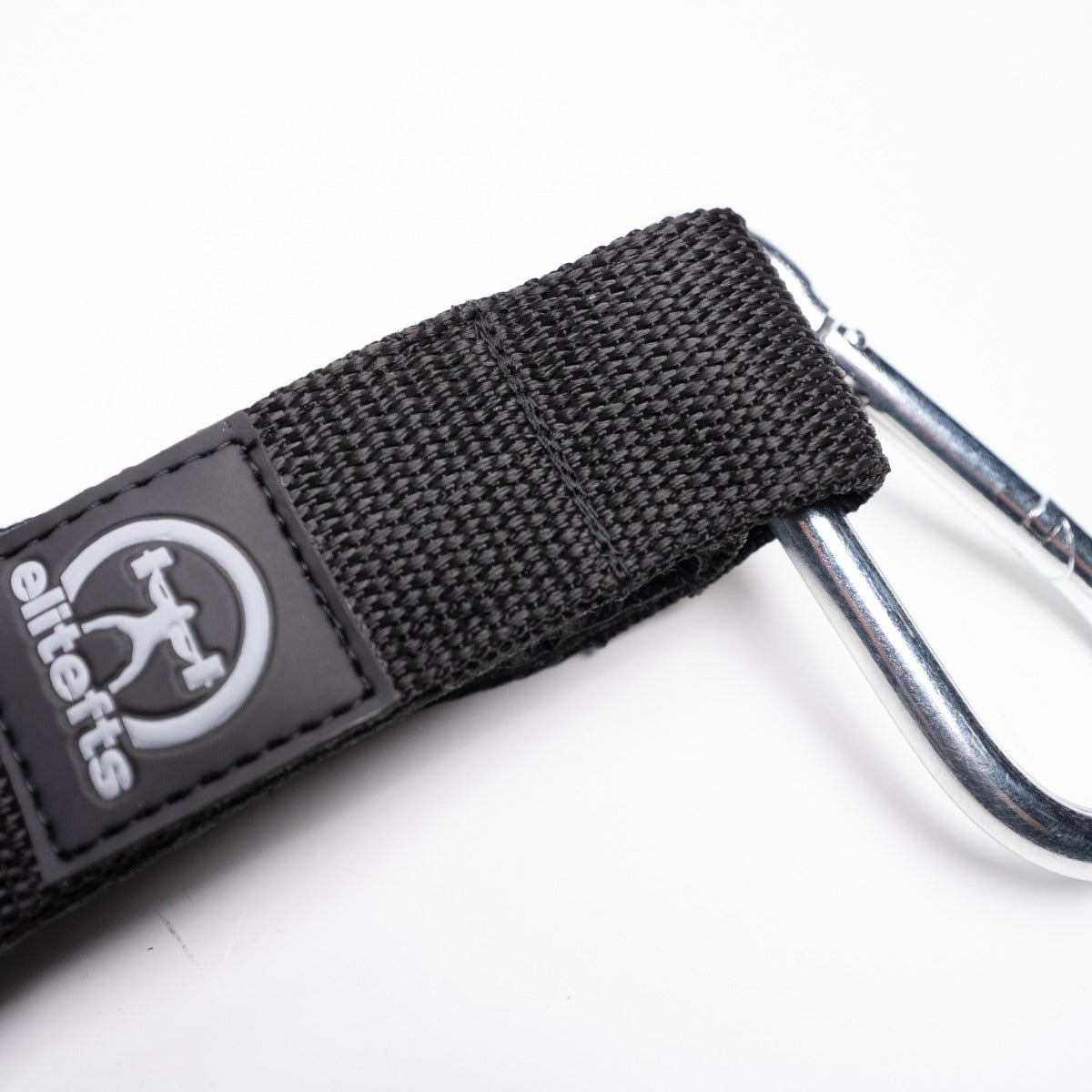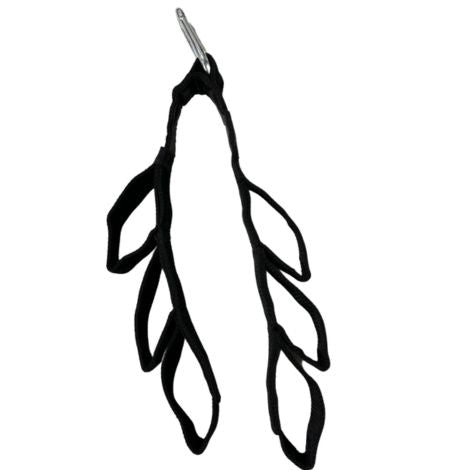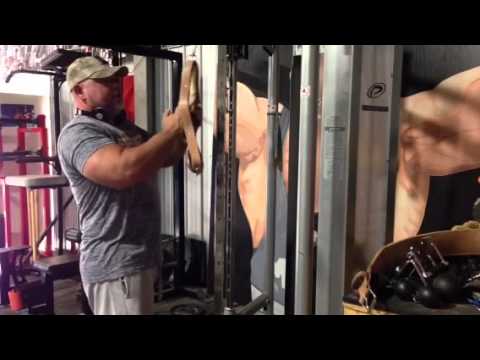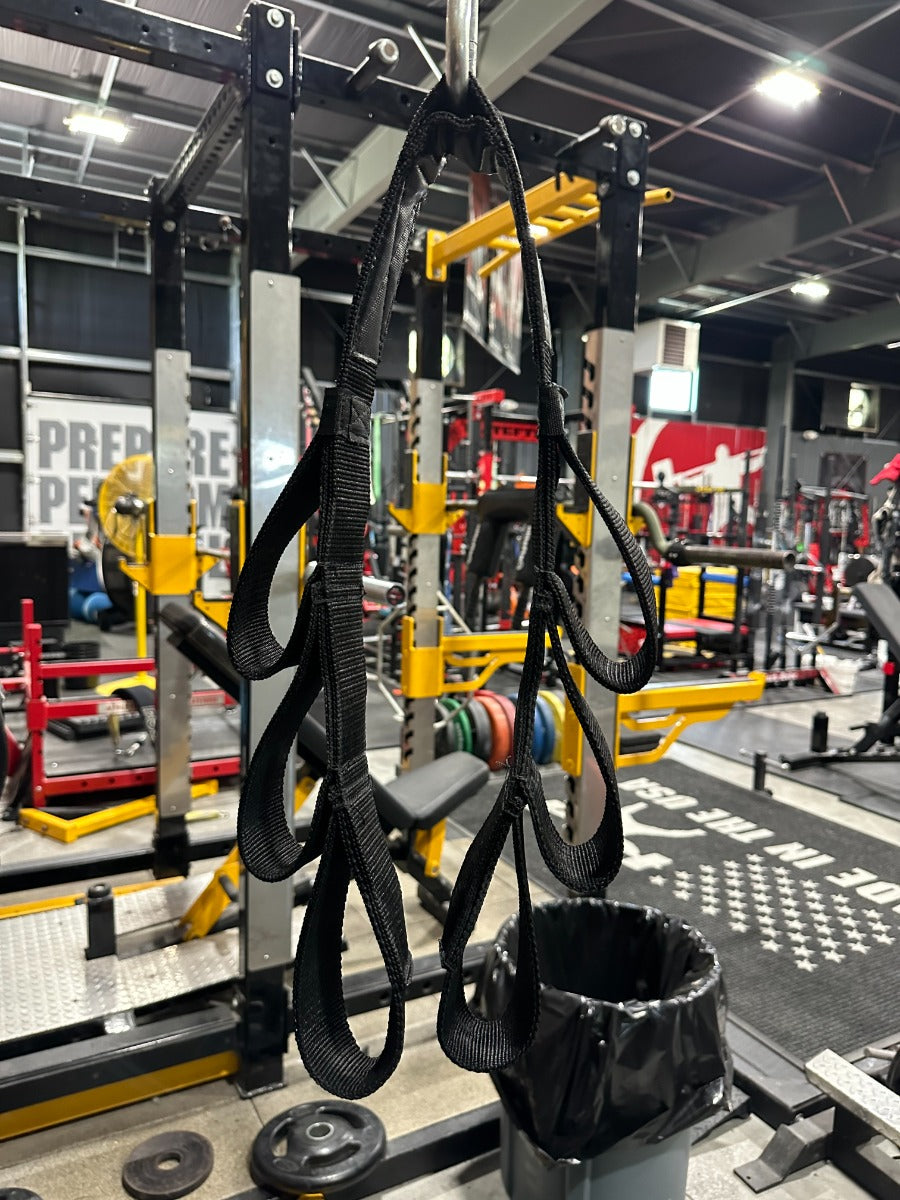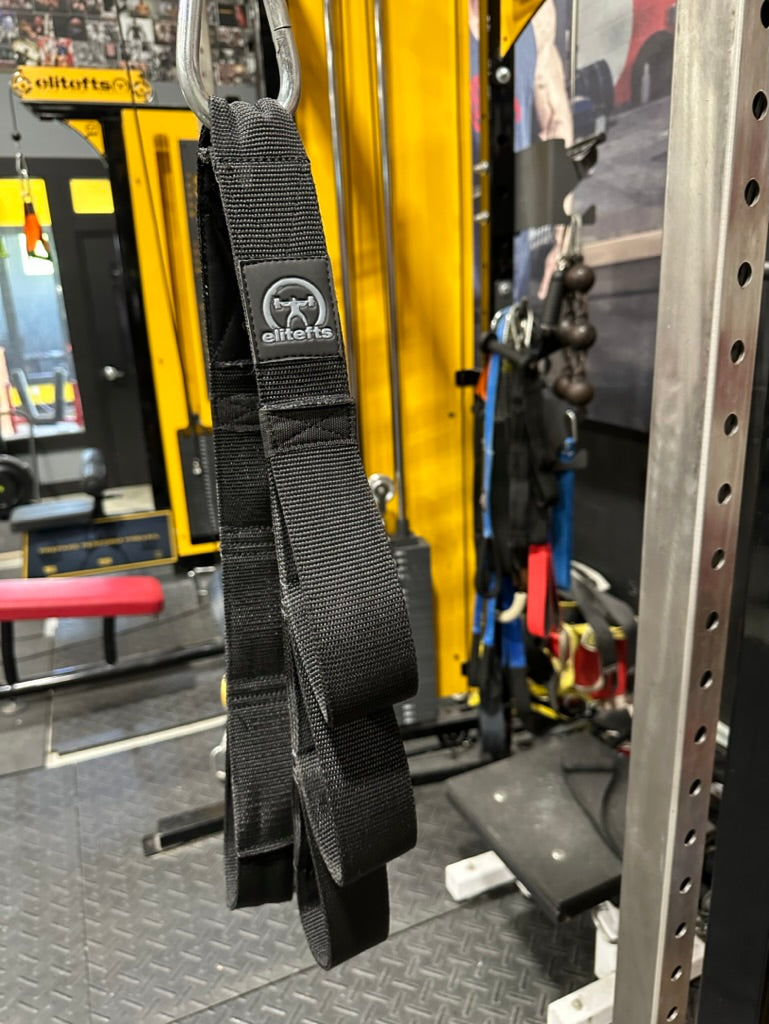Prowler pushes,
bag work, and
sled pulling can be hard on the connective tissue and joints if you don't prepare properly. Overuse injuries from conditioning work will come very fast because of the repetitive motion of it all, and they don't go away very quickly even when treated properly. So start modestly and work your way up. If you feel an overuse injury coming on like shin splints or constant aches in your heel and such, discontinue whatever it is you’re doing that causes the pain and find something to replace it with. If you need to give your legs a break, have heavy bag work in there for two of the four days or swim for one of those days. If you can't swim, this is a great opportunity to go learn how. So for the guy looking to improve his conditioning, here’s a split he could use if he were doing conditioning four days a week. Eight-week fat guy plan to stop breathing heavy sitting on the couch: Week 1 Day 1: Hill sprints X 3 (rest is walk back down) Day 2: Heavy bag work, 2-minute rounds X 3, 120 seconds rest between rounds Day 3: Prowler pushing, 40-yard pushes X 5, 2 minutes rest between Day 4: 60-yard sprints at 65% speed X 5 (rest is walk the 60 yards back) Notes: If you don't have a Prowler, use a sled. If you don't have a sled, push a car. If you don't have a car, walk around the neighborhood and fight the toughest looking dog you see for a solid five minutes. Week 2
- Hill sprints X 4
- Heavy bag work, 2-minute rounds X 4, 90 seconds rest between
- Prowler pushing, same as week 1
- 60-yard sprints, same as week 1 but at 75% speed
- Hill sprints X 5
- Heavy bag work, 2-minute rounds X 5, 120 seconds rest between
- Prowler pushing, 40-yard pushes X 6, 2 minutes rest between
- 60-yard sprints at 65% speed X 8
- Hill sprints X 8
- Heavy bag work, 2-minute rounds X 6, 90 seconds rest between rounds
- Hill sprints X 6
- Tire sledge hammering (use a 12- or 16-lb sledge hammer), alternate each side, 20 seconds of sledge hammering, rest 10 seconds, and go to the other side. When you compete both sides, that’s 1 set. Repeat this 4 more times.
- Bag work, 2-minute rounds X 6, 60 seconds rest between
- 60-yard sprints at 75% speed X 10
- Hill sprints X 8
- Tire sledge hammering, 20 seconds of work, 10 seconds rest X 6 rounds
- Bag work, 2-minute rounds X 8, 90 seconds rest between
- 60-yard sprints at 65% speed X 12
- Hill sprints X 10
- Tire sledge hammering, 8 rounds
- Bag work, 2-minute rounds X 8, 90 seconds rest between
- 60-yard sprints at 75% speed X 12
- Hill sprints X 12
- Tire sledge hammering, 10 rounds
- Bag work, 2-minute rounds X 10, 90 seconds rest between
- 60-yard sprints at 75% speed X 15

Strength training While conditioning, your strength will probably take a bit of a dive at first. This is normal. Don’t fret this. Remember, you can't serve two masters. If conditioning is the goal right now, scale back lifting to twice a week, narrow your movements down to a select few, and maximize your training economy. The big four will always be the squat, deadlift, bench, and overhead press. Because your strength will be going up and down quite a bit until you adapt to the conditioning training, you can either do singles with the big four, working up to what you feel like on that day to keep strength gains intact as much as possible or use a program like
5/3/1 and just get the minimum reps in for the day. I also suggest splitting those up so that you train your squat in one week and your deadlift the next week and your bench in one week and your overhead press the next week. Week 1 Day 1: Bench press Day 2: Squat Week 2 Day 1: Overhead press Day 2: Deadlift Circuits to supplement your conditioning work Because our emphasis is conditioning, let’s also put that to work after we’re done with our main lift. On upper body days, do a circuit involving two pushing and two pulling movements, and on lower body days, do a circuit for quads, hamstrings, abs, and glutes. Upper body circuit Push-ups: 5, 10, 15, 20, 15, 10, 5 Chin-ups: 1, 2, 3, 4, 5, 4, 3, 2, 1 Dips: 3, 6, 9, 12, 15, 12, 9, 6, 3 Barbell rows at 135 or 185 (185 for stronger guys): 3, 6, 9, 12, 15, 12, 9, 6, 3 There are a couple ways you can run this. You can do the first round (five push-ups, one chin-up, three dips, and three rows all in a row) and then rest for two minutes, or you can go through the whole thing nonstop. You can do a mix and match of both as well. Do two rounds nonstop and then rest for two minutes. Either way, just make sure you push yourself and work. Lower body circuit Walking lunges: 5, 10, 15, 20, 25, 20, 15, 10, 5 Dumbbell stiff legs: 8 reps same weight each circuit Ab wheel: 3, 6, 9, 12, 15, 12, 9, 6, 3 Glute ham raises or hypers: 10–20 reps each circuit Don't be surprised if this circuit puts you down for a few days, especially if you’ve been used to doing low rep work. Conditioning will be hard with sore ass legs, but man up and get it done even if you are slow and it is painful. Eating less made (sort of) easy Just like I can narrow down a solid bulking diet to some peanut butter and jelly sandwiches, I can narrow down a diet for the blue collar trainer for losing body fat. Will it suck? At first, yes. Anytime you go into a calorie deficit, the first few weeks are the most awful. You will be hungry, and I will give some tips for getting around this, too. However, there will be times when you're just going to be hungry and you'll have to deal with that for a little while. Focus on your goals and hunker down. If that doesn't work, have a buddy kick you in the junk and you won't think about eating for a few hours. I haven't tried this method yet, but if you decide to try it, make sure you get it on YouTube for verification. A few things I know will help:
- Chew gum
- Drink diet 7-Up or water with lemon
- Drink green tea
- Eat sugar free, fat free Jell-O as a snack
Training for the Fat Guy


























